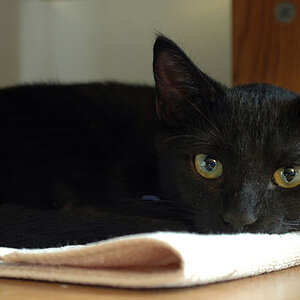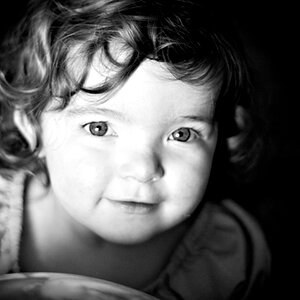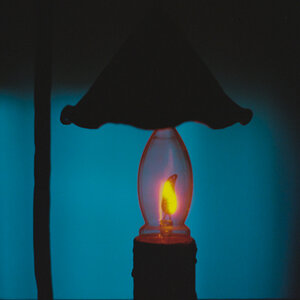Navigation
Install the app
How to install the app on iOS
Follow along with the video below to see how to install our site as a web app on your home screen.

Note: This feature currently requires accessing the site using the built-in Safari browser.
More options
You are using an out of date browser. It may not display this or other websites correctly.
You should upgrade or use an alternative browser.
You should upgrade or use an alternative browser.
Super shallow Dof and bokeh just a fad?
- Thread starter runnah
- Start date
TCampbell
Been spending a lot of time on here!
- Joined
- Mar 31, 2012
- Messages
- 3,614
- Reaction score
- 1,556
- Location
- Dearborn, MI
- Can others edit my Photos
- Photos OK to edit
I hope the current "film" replica is just a fad. Some of them just look like a bad Instagram filter and nothing like film.
^^ This! This is probably the #1 thing that I dislike in images I'm seeing today. This fad of the "retro" look.
I look at them and say "No... no... that is NOT a 'retro' look." Our images... even back in the day... NEVER actually looked liked that.
We had lots of photographs in the front window of the studio. It faced east. Even with UV protection (which merely reduces, but does not completely eliminate, UV) the images would eventually start to look faded. When the images were no longer up to standard... we removed them from the frames and threw them in the garbage and replaced them with fresh new images.
If an image fresh back from the lab looked dull, faded, weathered, etc. we knew that the lab was using expired chemicals or paper or just over-used the chemicals and we'd be upset with the lab.
I do know a young photographer who was building a portfolio and nearly every image was of this "faded, weathered, washed-out" look very commonly used on Instagram (which I think we've established is NOT my favorite.) My advice was: as a photographer considering your work, nothing in your portfolio suggests that you are able to shoot a "straight shot". I'm not looking to see what you can do with Photoshop... I'm looking to see what you can do WITH A CAMERA. Show me what you can get out of the camera.
This is not to suggest that I'm against editing software... to the contrary, I believe in photo adjustment software just as much as I believe in working a print in the darkroom. But when I see distorted, blurred, weather-faded, damaged, scratched images with sensor dust and lens flare (for good measure I suppose because why not... you did everything thing else to abuse the image, what's one more thing?)... to me it looks like the photographer was only able to get rubbish out of the camera and is trying to pass off the rubbish as "art".
TCampbell
Been spending a lot of time on here!
- Joined
- Mar 31, 2012
- Messages
- 3,614
- Reaction score
- 1,556
- Location
- Dearborn, MI
- Can others edit my Photos
- Photos OK to edit
cars look best against a soft narrowed/compressed bg.
people dont look best when only a few strands of their eyebrow is in focus.
I do normally like "whole" subjects focused but backgrounds softly blurred and to get that, I'm usually picking a long-ish lens focal length and f/4 (all of my lenses do f/2.8 or better except one, but I seldom go all the way down to f/2.8.)
Also, I typically do not like the somewhat over-used tilt-shift effect of using the tilt-shift "backwards" (rather than using it to bring an angled subject plane completely into focus, it's used to throw as much of the scene out of focus as possible and just allow a narrow band of focus.)
But then I did run across this particular portrait and I have to confess that I do like this (this is not my image, so I'll just provide a link):
http://lenspimp.com/c/category_image/lg/Canon_TSE_45mm_28_LG.jpg
I like that this shot is playing the focus along with the short-lighting... the left side of his face is lit, the right side is in shadow. The left side of his face is also focused... the right side is out of focus.
Shallow depth of field a fad? Seriously?
There are many great photographic images with shallow depth of field through the history of photography. And there will continue to be.
I enjoy well executed photographs--shallow depth of field or not, as appropriate to the image.
There are many great photographic images with shallow depth of field through the history of photography. And there will continue to be.
I enjoy well executed photographs--shallow depth of field or not, as appropriate to the image.
sscarmack
Been spending a lot of time on here!
- Joined
- Jul 14, 2009
- Messages
- 2,389
- Reaction score
- 949
- Location
- Sharpsville,PA
- Can others edit my Photos
- Photos OK to edit
My input, I didn't get 1.4 lens to not use 1.4
If you don't like something, don't look.
You can't please everyone.
If you don't like something, don't look.
You can't please everyone.
minicoop1985
Been spending a lot of time on here!
- Joined
- Sep 3, 2013
- Messages
- 5,520
- Reaction score
- 1,865
- Location
- Appleton, WI
- Can others edit my Photos
- Photos OK to edit
I use my Tamron wide open often enough on cars, but generally at a wide enough angle that the whole car's in focus and the background is just a little soft.
What drives ME nuts is the stupid LET'S MAKE FAKE LIGHT LEAKS!!!!! LET'S TAKE A TERRIBLY COMPOSED, OUT OF FOCUS PICTURE, ADD SOME LIGHT LEAKS, MAYBE PUT SOME TERRIBLE POEM ON IT, AND CALL IT "ART"!!!!!!!!!!
What drives ME nuts is the stupid LET'S MAKE FAKE LIGHT LEAKS!!!!! LET'S TAKE A TERRIBLY COMPOSED, OUT OF FOCUS PICTURE, ADD SOME LIGHT LEAKS, MAYBE PUT SOME TERRIBLE POEM ON IT, AND CALL IT "ART"!!!!!!!!!!
Derrel
Mr. Rain Cloud
- Joined
- Jul 23, 2009
- Messages
- 48,225
- Reaction score
- 18,941
- Location
- USA
- Website
- www.pbase.com
- Can others edit my Photos
- Photos OK to edit
f2bthere said:Shallow depth of field a fad? Seriously?
Yes, it's a huge fad. Have you not see the threads in every on-line forum about, "How do I shoot bokeh photos?" And shallow DOF is a huge fad currently. It never used to be, but it is today, in this current era. One eye in focus, the other eye out of focus. Nose out of focus, but that lead eye in-focus. Going for that blurry background, even though it means the subject's close-up face is 50,60,70 percent out of focus. This is currently a very faddish approach that has gained tremendous popularity in recent years. It's a current fad, along with a few other visual tropes, like fake film grain, artificially elevated blacks for that faded-no-deep-blacks-processing look, fake vintage effects, heavy vignettes, and so on. A lot of people are enjoying it.
Photography has always been a popular endeavor, and so fads and trends sweep the field, and then are discarded as something else comes along. The 1980's were HUGE for the Cokin filter system and very heavy effects.In the 1990's it was selective color. In the 2000's it was sloppy borders. Who remembers laser backdrops in portraiture, or the classic bride and groom inside a brandy snifter wedding shot?
Remember bell-bottom jeans? How about low-rise jeans? How about what are now being called "Mom jeans", which is the return of the normal-rise jeans that spanned the 1950 to 1999 period? Remember the craze of women's cork-soled "wedge high heels?" Junior high school, 1978...and now... BACK with a vengeance! Fads come and go, and when they are current, people love them...and then they turn their back on them and move on.
Here we go, 1.63 million results on the search string "How do I shoot bokeh photos?" How do I shoot bokeh photos - Google Search
Or how about 3.98 million hots on the search string, "How do I shoot shallow depth of field photos?"
How do I shoot shallow depth of field photos - Google Search
Solarflare
No longer a newbie, moving up!
- Joined
- May 24, 2012
- Messages
- 2,898
- Reaction score
- 395
Whow. I'm stunned. An article of Derrel - with which I dont agree ! Has that ever happened before ?
As the opposing story - the german Carl Zeiss company got so fed up with the many requests for faster glas that they made a (disfunctional) joke lens: Carl Zeiss Super-Q-Gigantar 40mm f 0.33 The Fastest Lens Ever Made
By the way - that Canon 50mm f0.95 lens is still around and quite popular and expensive. Its nickname is "dream lens". Steve Huff got one, sold it because somebody offered a very good price - and then got another because he missed it so much.
The Canon 50mm f 0.95 Dream Lens Review by Steve Huff STEVE HUFF PHOTOS
Living in Dreamtime. Re-Visiting the Canon Dream Lens 50 f 0.95. STEVE HUFF PHOTOS
As the opposing story - the german Carl Zeiss company got so fed up with the many requests for faster glas that they made a (disfunctional) joke lens: Carl Zeiss Super-Q-Gigantar 40mm f 0.33 The Fastest Lens Ever Made
So yeah, fast glas - and the shallow depth of field that comes with it - has been popular for a LONG time.The lens was born in the 1960s during a time in which camera companies were aiming for larger and larger apertures, just as companies these days are gunning for more and more megapixels. Canon had just released its 50mm f/0.95, and photographers became fixated on the speed of lenses on paper rather than their performance in real world situations.
By the way - that Canon 50mm f0.95 lens is still around and quite popular and expensive. Its nickname is "dream lens". Steve Huff got one, sold it because somebody offered a very good price - and then got another because he missed it so much.
The Canon 50mm f 0.95 Dream Lens Review by Steve Huff STEVE HUFF PHOTOS
Living in Dreamtime. Re-Visiting the Canon Dream Lens 50 f 0.95. STEVE HUFF PHOTOS
Mattis
No longer a newbie, moving up!
- Joined
- Mar 13, 2015
- Messages
- 243
- Reaction score
- 171
- Can others edit my Photos
- Photos OK to edit
In my opinion it depends on the situation. Bokeh and super shallow dof can make one image and break the other.
For example, in a portrait I do like nice bokeh. It just works for me. The photo is supposed to be about the subject and that way you can nicely seperate the subject from everything else in the image while still getting a pleasing background.
But at the same time it shouldn't be so shallow that the whole face isn't sharp... To get everything important in sharp focus you need about 3-5cm before and behind the eyes, that is still very shallow!
All in all I do like fads though. Whether we like the results or not, at the end of the day it still makes people pick up a camera to do something creative :3
For example, in a portrait I do like nice bokeh. It just works for me. The photo is supposed to be about the subject and that way you can nicely seperate the subject from everything else in the image while still getting a pleasing background.
But at the same time it shouldn't be so shallow that the whole face isn't sharp... To get everything important in sharp focus you need about 3-5cm before and behind the eyes, that is still very shallow!
All in all I do like fads though. Whether we like the results or not, at the end of the day it still makes people pick up a camera to do something creative :3
Torus34
No longer a newbie, moving up!
- Joined
- Jan 26, 2006
- Messages
- 2,117
- Reaction score
- 37
- Location
- Tottenville, Staten Island, NYC USA
- Can others edit my Photos
- Photos OK to edit
On portraits:
Fads come and go. We've seen high key, low key, minimal DOF, bleeding borders, soft focus, color saturation effects and don't remember what else over the years. They've all gone through a period of overuse before settling down and becoming just another specific 'tool' in the photographer's kit bag.
A really good portrait remains just that: a print which tells us something about the subject beyond what he/she looks like. The techniques that are brought to bear in the process stand in service to the eventual image.
Fads come and go. We've seen high key, low key, minimal DOF, bleeding borders, soft focus, color saturation effects and don't remember what else over the years. They've all gone through a period of overuse before settling down and becoming just another specific 'tool' in the photographer's kit bag.
A really good portrait remains just that: a print which tells us something about the subject beyond what he/she looks like. The techniques that are brought to bear in the process stand in service to the eventual image.
rexbobcat
Been spending a lot of time on here!
- Joined
- Nov 28, 2011
- Messages
- 5,014
- Reaction score
- 1,967
- Location
- United States
- Can others edit my Photos
- Photos OK to edit
I feel like shallow DOF has always been big. It's just more apparent now because more people are shooting and it's easier to share images.
Now, if you want to talk about a fad...color grading. Everyone and their dogs are color grading everything.
Just type "cinematic color grading photoshop" into Youtube and you get 18,000 results.
Now, if you want to talk about a fad...color grading. Everyone and their dogs are color grading everything.
Just type "cinematic color grading photoshop" into Youtube and you get 18,000 results.
Similar threads
- Replies
- 66
- Views
- 5K








![[No title]](/data/xfmg/thumbnail/38/38261-db20f6f92ee8f0d4c5cf1536e308638b.jpg?1619738546)



